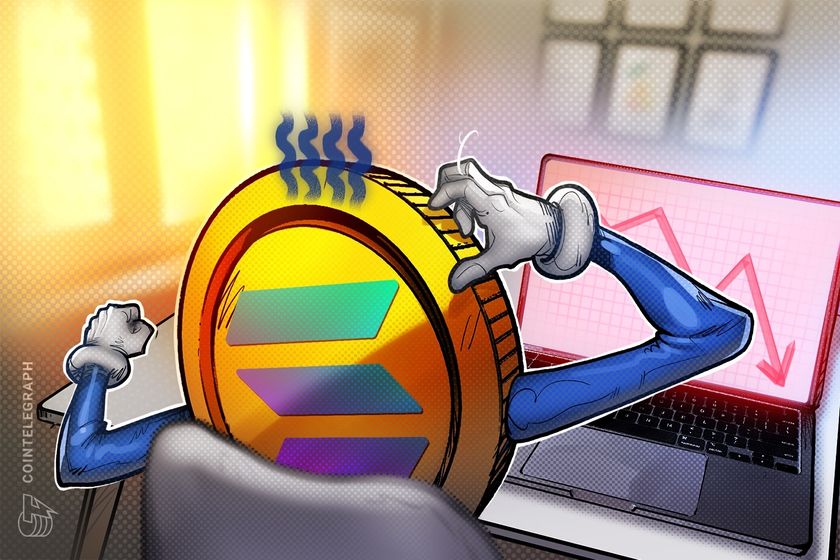
The top 100 DeFi tokens had a mixed week, with most of the tokens continuing to trade in a similar range as the previous week.
Welcome to Finance Redefined, your weekly dose of essential decentralized finance (DeFi) insights — a newsletter crafted to bring you the most significant developments from the past week.
The past week in DeFi saw new advancements in zero-knowledge proofs (ZK-proofs) as a scaling solution as more DeFi protocols embraced the technology.
A new United States Senate DeFi bill attracted a lot of scrutiny — though not necessarily of the positive kind — as many stakeholders came out to slam the “unworkable” legislation.
The CEO of the dydx Foundation made a bold prediction that centralized exchanges will eventually become a gateway for DeFi, while Polygon 2.0 laid the groundwork for decentralized governance.
The top 100 DeFi tokens had another mixed week of ups and downs, with most tokens continuing to trade in the same range as the previous week.
Centralized exchanges will become gateways for DeFi — DYdX Foundation CEO
The dYdX Foundation — an independent DeFi nonprofit founded to support the dYdX protocol — recently launched a public testnet for its latest version, v4. According to the foundation, this puts dYdX ahead of schedule for the impending launch of the v4 mainnet, something the foundation claims represents complete decentralization for dYdX.
As Cointelegraph recently reported, the July 5 testnet launch represented the fourth of five milestones dYdX laid out in its 2022 roadmap toward decentralization.
Polygon 2.0 begins groundwork for decentralized governance
Polygon Labs has started work on an expansion intended to include all blockchains and applications running on the Polygon network, and seeks to democratize the upgrade process and encourage community participation.
On July 19, the company’s developers proposed revamping the governance mechanism for the forthcoming Polygon 2.0 roadmap to establish several layer 2s on the network.
Coin Center and Blockchain Association slam ‘unworkable’ U.S. Senate DeFi bill
Crypto industry advocacy bodies have slammed a newly proposed U.S. Senate bill for what they say is a confused approach to regulating the DeFi sector.
On July 20, crypto think tank Coin Center and crypto advocacy group the Blockchain Association released separate statements describing the legislation as a “messy,” “unworkable” and “unconstitutional” way of regulating DeFi.
Chainlink launches cross-chain protocol bridging blockchain to TradFi
The development firm behind the Chainlink protocol and its native LINK token has gone live with its cross-chain protocol aimed at providing interoperability between traditional financial firms, and public and private blockchains.
In a July 17 post on the Chainlink blog, Chainlink Labs chief product officer Kemal El Moujahid announced that its cross-chain interoperability protocol has launched under early access on Ethereum, Avalanche, Polygon, Arbitrum and Optimism.
DeFi liquidity protocol adds ConsenSys-developed zkEVM rollup Linea
Amid the growing popularity of layer-2 scaling solutions based on ZK-proofs, decentralized finance liquidity protocol Symbiosis has added support for Linea, a zero-knowledge Ethereum Virtual Machine (zkEVM)-based scaling solution for cross-chain swaps developed by ConsenSys.
Symbiosis said in a statement that Linea is a developer-ready zkEVM rollup, which means it is Ethereum-compatible and thus lets developers reuse a lot of existing infrastructure for creating multi-asset solutions. Linea comprises 100+ protocols, developer tools and decentralized applications, making it a potentially helpful scaling tool for developers in the Ethereum ecosystem.
DeFi market overview
DeFi’s total market value saw a bullish surge after three bearish weeks. Data from Cointelegraph Markets Pro and TradingView shows that DeFi’s top 100 tokens by market capitalization had a bullish week, with most tokens trading in the green. The total value locked in DeFi protocols remained below $50 billion.
Thanks for reading our summary of this week’s most impactful DeFi developments. Join us next Friday for more stories, insights and education regarding this dynamically advancing space.














































